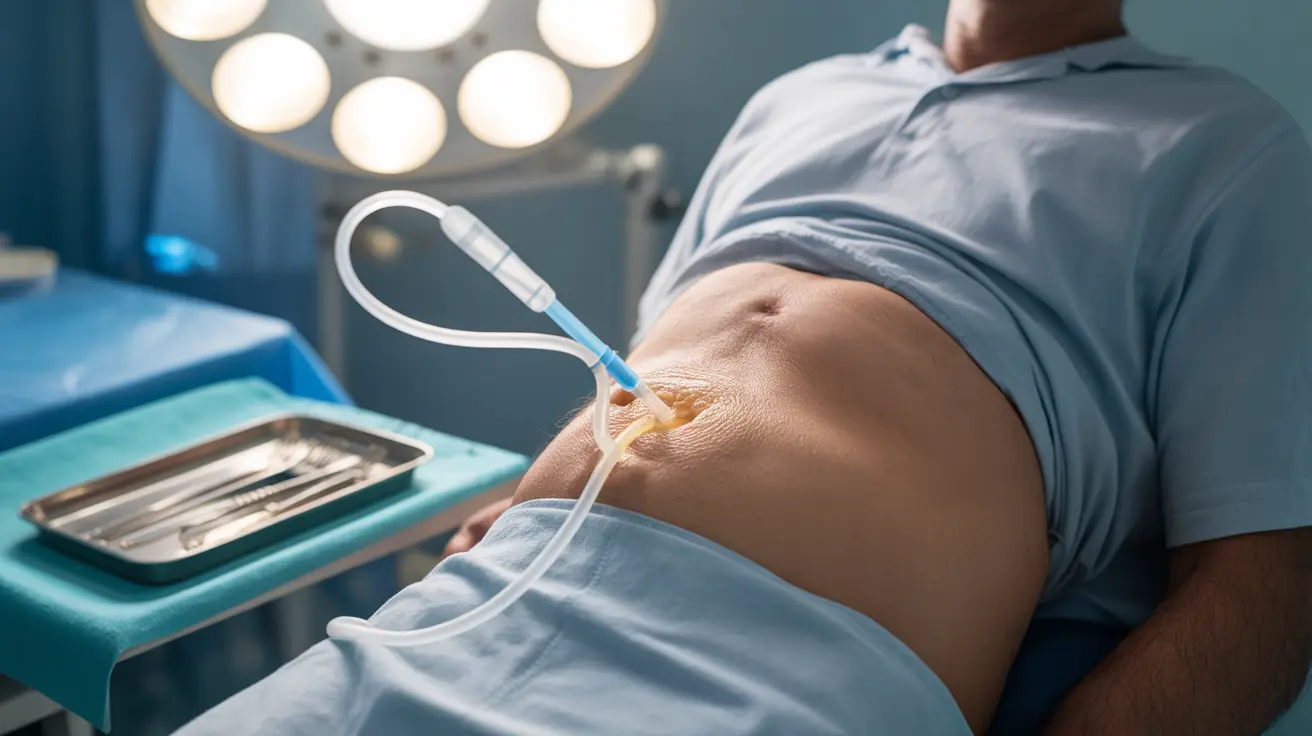Understanding how a feeding tube is inserted through gastrostomy can feel overwhelming for patients and caregivers. This comprehensive guide will walk you through the procedure, preparation requirements, and what to expect during recovery to help you feel more confident and prepared.
A gastrostomy feeding tube (G-tube) provides essential nutrition directly to the stomach when eating by mouth isn't possible or safe. Learning about the insertion process and proper care is crucial for successful long-term management.
Understanding the Gastrostomy Procedure
A gastrostomy feeding tube is typically inserted using one of two main approaches: endoscopic (PEG) or surgical. The choice depends on your specific medical situation and your healthcare provider's recommendation.
Percutaneous Endoscopic Gastrostomy (PEG)
During a PEG procedure, your doctor uses an endoscope (a flexible tube with a camera) to guide the feeding tube placement through your abdomen into your stomach. This minimally invasive approach is performed under sedation and usually takes 30-45 minutes.
Surgical Gastrostomy
Some patients may require surgical placement, which involves making a small incision in the abdomen to insert the feeding tube directly into the stomach. This approach might be necessary if endoscopic placement isn't possible due to anatomical considerations or other medical conditions.
Preparing for Feeding Tube Insertion
Proper preparation is essential for a successful procedure. Your healthcare team will provide specific instructions, which typically include:
- Fasting for 8-12 hours before the procedure
- Temporarily stopping certain medications
- Completing necessary blood tests and imaging studies
- Discussing anesthesia or sedation options
- Arranging for transportation home after the procedure
Recovery and Initial Tube Management
The immediate recovery period requires careful monitoring and gradual introduction of tube feeding. Your medical team will teach you essential care techniques, including:
- Proper cleaning and dressing of the insertion site
- Recognizing signs of infection or complications
- Understanding feeding schedules and formulas
- Managing tube positioning and securing methods
- Learning proper medication administration through the tube
Long-term Care and Maintenance
Successful long-term management of a gastrostomy feeding tube involves regular care and attention to prevent complications. Key aspects include:
- Daily cleaning of the insertion site and surrounding skin
- Regular tube flushing to prevent blockages
- Proper positioning during feedings
- Regular checks of tube placement and condition
- Following recommended feeding schedules and protocols
Frequently Asked Questions
How is a feeding tube inserted using the gastrostomy procedure?
A feeding tube is inserted either through an endoscopic procedure (PEG) or surgical approach. The endoscopic method uses a flexible camera to guide the tube through a small incision in your abdomen into your stomach, while surgical placement involves creating an opening directly into the stomach under general anesthesia.
What preparations are needed before getting a gastrostomy feeding tube?
Preparation includes fasting for 8-12 hours, completing necessary medical tests, reviewing medications with your healthcare provider, and arranging for post-procedure care and transportation. Your doctor will provide specific instructions based on your medical situation.
What are the common risks and complications after feeding tube insertion?
Common complications can include infection at the insertion site, tube dislodgement, leakage around the tube, skin irritation, and tube blockage. Most complications are manageable with proper care and prompt medical attention.
How should I care for and manage a gastrostomy feeding tube after it has been inserted?
Daily care includes cleaning the insertion site, checking for proper tube placement, flushing the tube regularly, and following feeding protocols. Your healthcare team will provide detailed instructions for your specific situation and type of feeding tube.
How soon can feeding start after gastrostomy tube placement, and what should I expect during recovery?
Feeding typically begins 24-48 hours after tube placement, starting with clear liquids and gradually progressing to full formula feeds. Recovery involves initial discomfort at the insertion site, which usually improves within a few days to weeks. Your healthcare team will monitor your progress and adjust the feeding schedule as needed.




